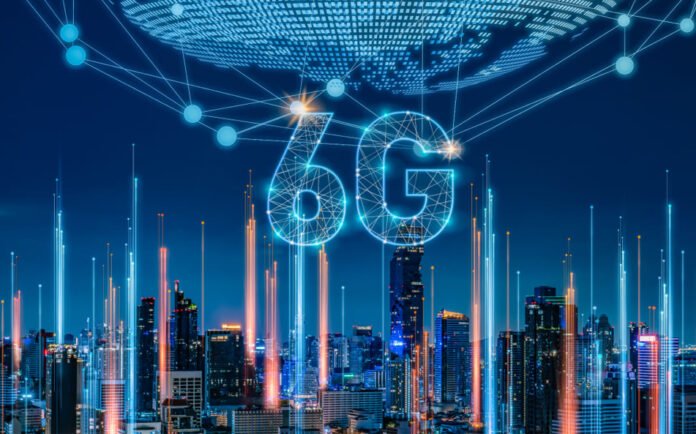The way we connect to the world has evolved faster in the last decade than in the entire century before it. Just a few years ago, 4G made mobile video streaming and app-driven lifestyles possible. Today, 5G networks are powering everything from remote surgeries to self-driving cars. And while many are still adjusting to 5G, the telecom industry is already laying the groundwork for 6G, a technology expected to revolutionize how we communicate, work, and live.
The shift from 5G to 6G won’t just mean faster internet speeds—it will reshape industries, economies, and the daily lives of billions of people. Understanding this transition now is key to preparing for a world that’s becoming increasingly connected.
Market Competition: Telecoms Racing to Stay Ahead
Telecom companies are in one of the most competitive eras of their history. The race to roll out 5G networks has been intense, with providers investing billions of dollars to secure spectrum licenses, upgrade infrastructure, and capture market share.
According to GSMA Intelligence, 5G connections are expected to surpass 2 billion globally by 2025, a staggering leap that shows how quickly adoption is spreading. However, competition isn’t just about who can deploy 5G the fastest—it’s about building ecosystems around it.
Telecom giants are no longer only network providers; they’re evolving into tech companies. By partnering with hardware manufacturers, app developers, and cloud platforms, telecoms are turning networks into innovation platforms. This strategy will be critical as 6G begins to take shape over the next decade.
Drawing Parallels: Telecom and Introducing Broker Models
Telecom partnerships are not unlike brokerage systems in finance. In finance, intermediaries called introducing brokers help connect clients to trading platforms, earning commissions for successful partnerships. If you’re unfamiliar with the concept, here’s a clear breakdown of what is an introducing broker: they are trusted connectors who build relationships, introduce clients to services, and share in the success of transactions.
Telecom companies are using similar partnership-driven strategies. Instead of building everything in-house, they’re leveraging resellers, third-party vendors, and even tech startups to expand their networks and services. This allows telecoms to scale quickly, access new markets, and deliver more personalized offerings—just like brokerage models do in finance.
The Impact of Next-Gen Networks on Industries
5G has already introduced a new era of connectivity, but 6G promises to unlock even greater potential. With theoretical speeds up to 100 times faster than 5G, 6G will not only improve current technologies but also create entirely new ones.
AI and Automation
AI relies heavily on large datasets and low-latency networks to process information in real time. 6G’s ultra-fast speeds and near-instant responses will supercharge AI applications, enabling autonomous vehicles, predictive analytics, and seamless decision-making across industries.
Augmented and Virtual Reality (AR/VR)
5G has made AR and VR experiences smoother, but 6G will take them to the next level. Imagine real-time AR navigation in cities or VR classrooms that feel as real as physical ones. Businesses in retail, healthcare, and entertainment will all benefit from immersive experiences that were once unimaginable.
Internet of Things (IoT)
By 2030, there could be 20 billion connected IoT devices, according to Statista. From smart homes to entire smart cities, 6G networks will allow billions of devices to communicate instantly, enabling efficient energy use, advanced healthcare monitoring, and intelligent traffic systems.
Challenges Facing Telecom Companies
Despite the promise of next-gen connectivity, rolling out these networks is far from simple.
- Infrastructure Costs: Deploying 5G required massive investments in cell towers, fiber optics, and spectrum licenses. 6G will demand even more advanced technology, which could cost billions more.
- Global Regulation: Governments play a key role in approving spectrum allocation and regulating networks. Coordinating these efforts globally will take time and negotiation.
- Security Concerns: Faster and more complex networks mean increased cybersecurity risks. Telecoms will need to stay ahead of evolving threats to protect users and businesses.
These challenges make partnerships—similar to the introducing broker model—even more critical. By working with technology providers, security companies, and local partners, telecoms can share the burden of innovation.
What Consumers Can Expect
For everyday users, the shift from 5G to 6G will bring noticeable improvements.
- Seamless Connectivity: Lag and buffering will become virtually nonexistent, making remote work, gaming, and streaming smoother than ever.
- Smarter Devices: Expect a rise in devices that “think” for you, from refrigerators that order groceries to cars that navigate themselves.
- Global Access: With expanding coverage, rural and underserved areas will gain access to faster, more reliable networks, bridging the digital divide.
Consumers may not notice the technical details, but they’ll feel the difference in their daily routines as 6G enables services that are more intuitive, efficient, and personalized.
Conclusion: Telecom as the Backbone of a Digital Future
The leap from 5G to 6G is more than just an upgrade in speed; it’s a transformation of the way we live, work, and interact with technology. Telecom companies are no longer simple service providers—they’re becoming the backbone of innovation.
By learning from partnership models like those used by introducing brokers, telecom companies can accelerate growth and create better user experiences. While challenges in cost, regulation, and security remain, the benefits of next-gen connectivity are undeniable.
As we look ahead to a world powered by 6G, it’s clear that these networks will not only connect us but also redefine the possibilities of the digital age.









